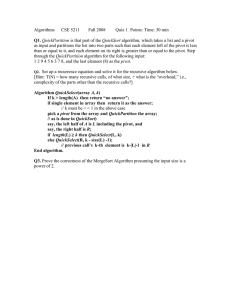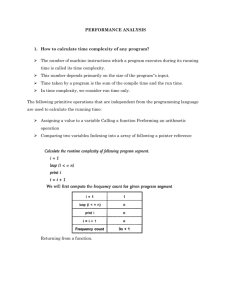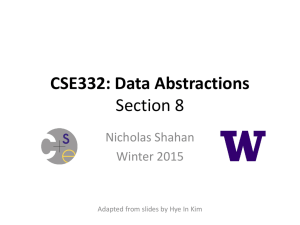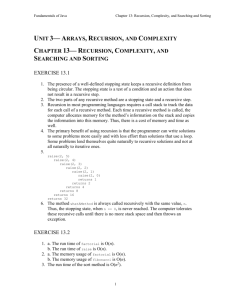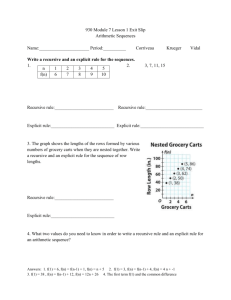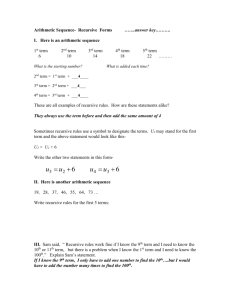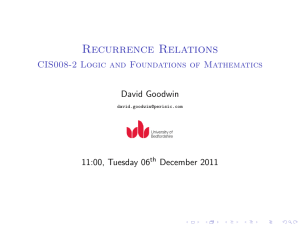Sept 9
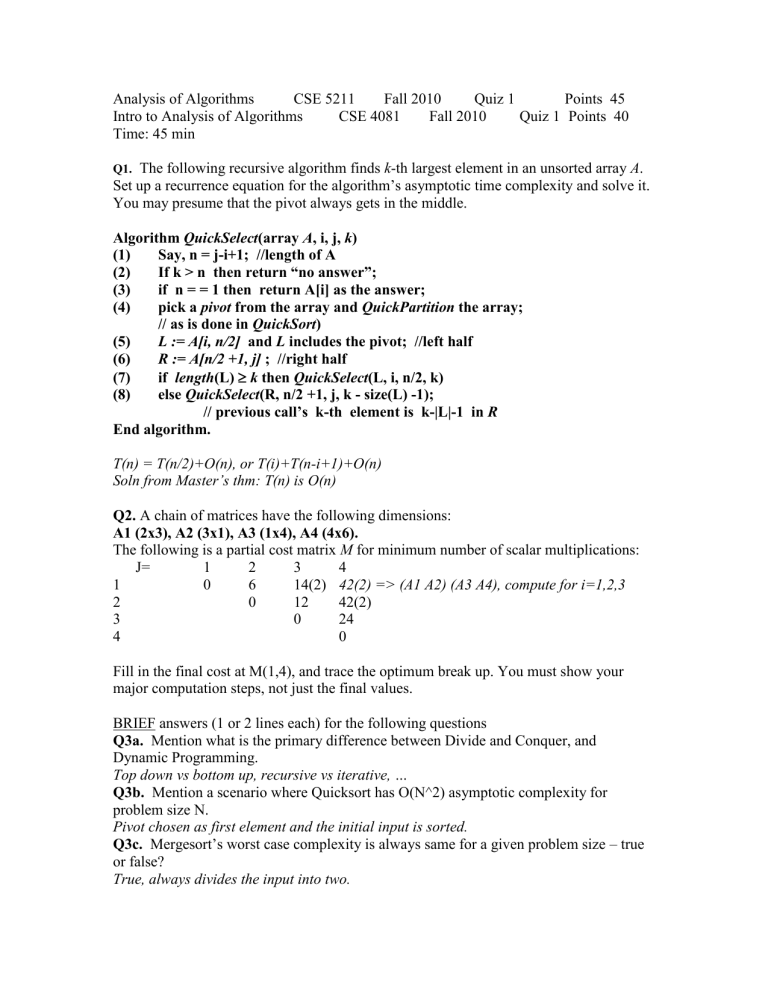
Analysis of Algorithms
Intro to Analysis of Algorithms
Time: 45 min
CSE 5211 Fall 2010 Quiz 1 Points 45
CSE 4081 Fall 2010 Quiz 1 Points 40
Q1.
The following recursive algorithm finds k -th largest element in an unsorted array A .
Set up a recurrence equation for the algorithm’s asymptotic time complexity and solve it.
You may presume that the pivot always gets in the middle.
Algorithm QuickSelect(array A, i, j, k)
(1) Say, n = j-i+1; //length of A
(2) If k > n then return “no answer”;
(3) if n = = 1 then return A[i] as the answer;
(4) pick a pivot from the array and QuickPartition the array;
// as is done in QuickSort)
(5) L := A[i, n/2] and L includes the pivot; //left half
(6) R := A[n/2 +1, j] ; //right half
(7) if length(L)
k then QuickSelect(L, i, n/2, k)
(8) else QuickSelect(R, n/2 +1, j, k - size(L) -1);
// previous call’s k-th element is k-|L|-1 in R
End algorithm.
T(n) = T(n/2)+O(n), or T(i)+T(n-i+1)+O(n)
Soln from Master’s thm: T(n) is O(n)
Q2.
A chain of matrices have the following dimensions:
A1 (2x3), A2 (3x1), A3 (1x4), A4 (4x6).
The following is a partial cost matrix M for minimum number of scalar multiplications:
J=
1
1
0
2
6
3 4
14(2) 42(2) => (A1 A2) (A3 A4), compute for i=1,2,3
2
3
4
0 12 42(2)
0 24
0
Fill in the final cost at M(1,4), and trace the optimum break up. You must show your major computation steps, not just the final values.
BRIEF answers (1 or 2 lines each) for the following questions
Q3a. Mention what is the primary difference between Divide and Conquer, and
Dynamic Programming.
Top down vs bottom up, recursive vs iterative, …
Q3b. Mention a scenario where Quicksort has O(N^2) asymptotic complexity for problem size N.
Pivot chosen as first element and the initial input is sorted.
Q3c.
Mergesort’s worst case complexity is always same for a given problem size – true or false?
True, always divides the input into two.
Q3d. Dynamic Programming is based on a recurrence equation for the respective optimizing parameter (e.g., the number of optimal scalar multiplication in Q2).
Why do we avoid coding that recurrence equation as a simple recursive algorithm?
Because, complexity becomes exponential for repeated computations of the same subproblems.
Q3e.
How many ‘steps’ are there in computing M(1,4) in Q2 above, which factors in the
O(n^3) asymptotic complexity of the algorithm?
Three, choose from 3 options of break up point.
[Grad question Q4 next page]
Grad Q4. DP may compute solutions for many sub-problems that are not necessary for the final optimal parameter. For instance, in 0-1 Knapsack problem we only need a subset of values in the optimum profit matrix but DP computes all elements of that matrix.
On the other hand, a recursive implementation of the recurrence would solve only for the necessary subproblems, but computes them repeatedly, thus, incurring a very high complexity.
Can you think of a way to combine the advantages of both?
Make recursive calls by encoding the recurrence, but store the result whenever a subproblem is computed in a data structure. Also, before making any recursive call check if it is already available in that data structure (then do not make the recursive call). This way only elements needed are computed but no repeated computations are being done.
This process is called “memoisation” – Google up, check spelling!
[This will not result in any reduction of complexity compared to the DP, why?
If you have found the answer, then can you think of a way to avoid that?]
